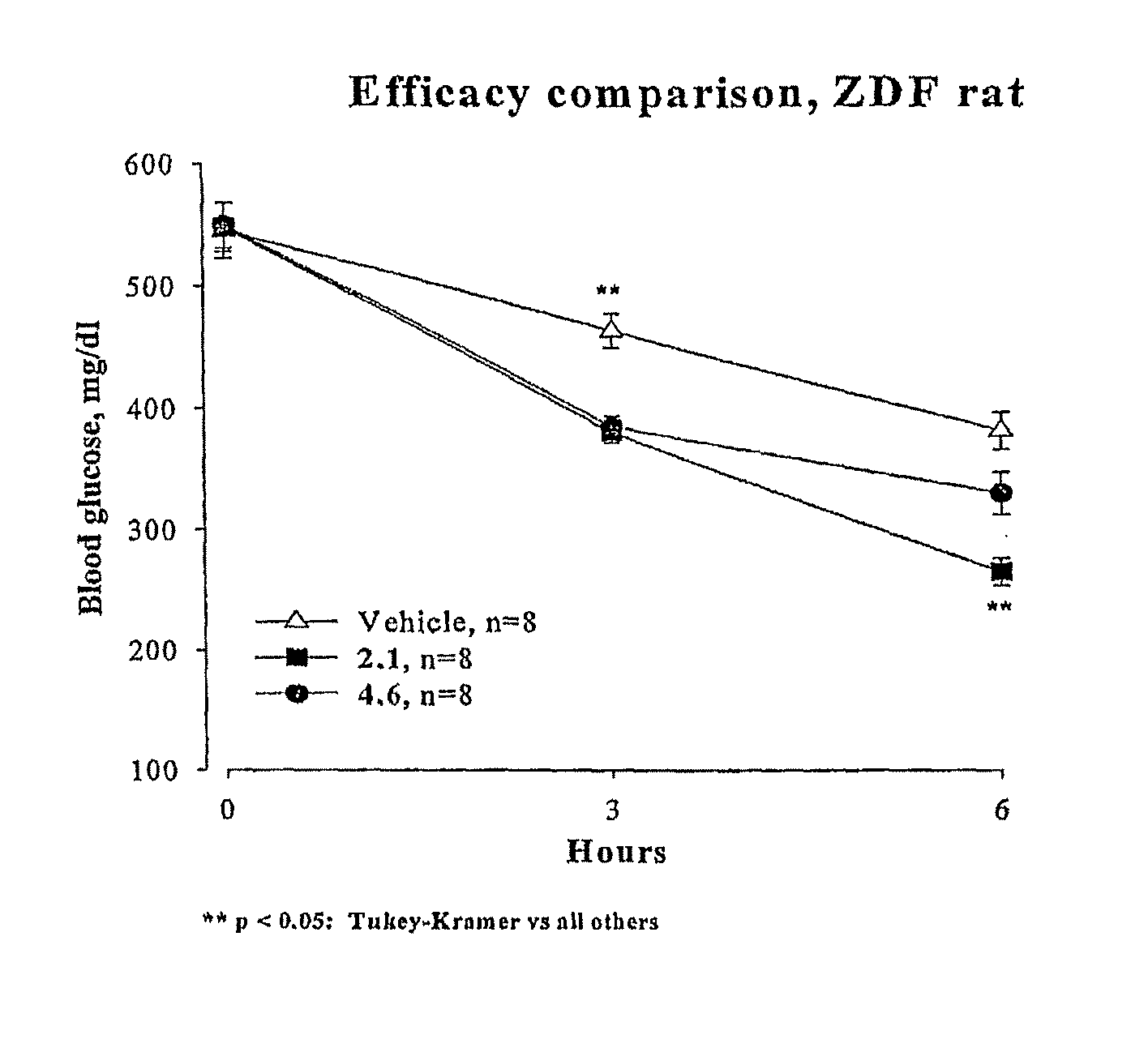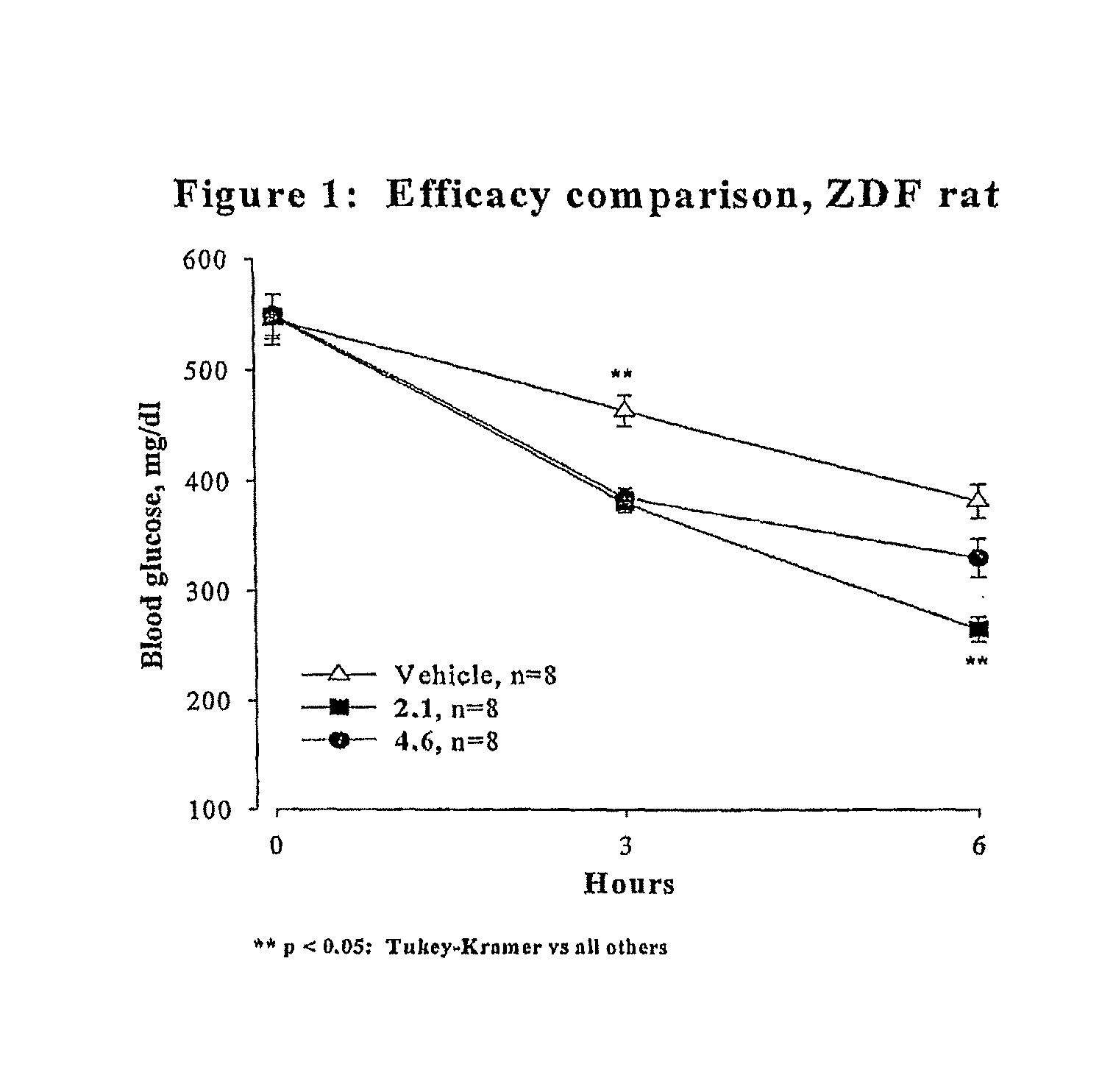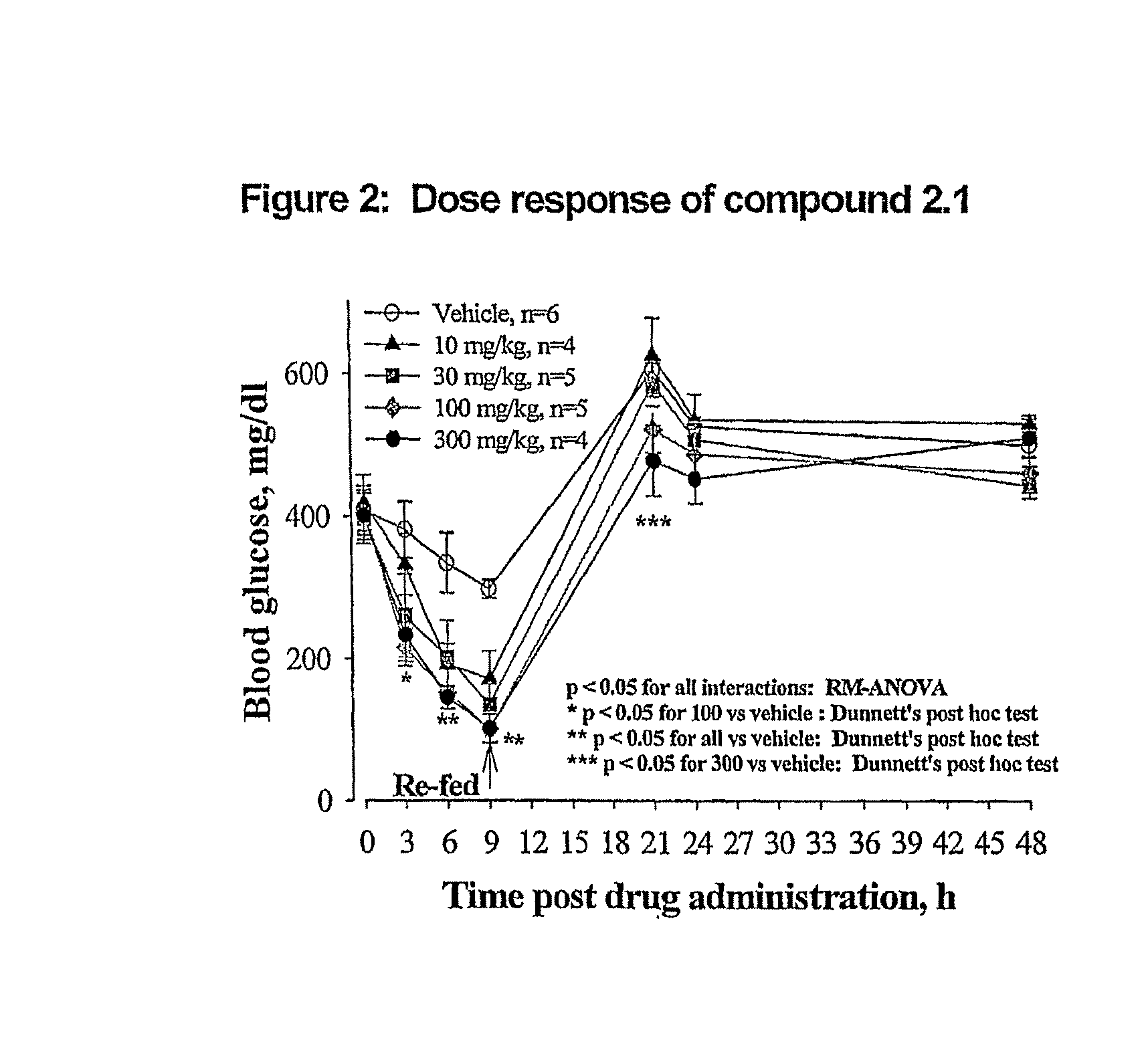Novel Thiazole Inhibitors of Fructose 1,6-bisphosphatase
a technology of fructose 1, 6bisphosphatase and thiazole, which is applied in the direction of biocide, drug composition, metabolic disorder, etc., can solve the problems of relatively weak compounds, inability to inhibit glucose production, so as to achieve the effect of relieving the diseas
- Summary
- Abstract
- Description
- Claims
- Application Information
AI Technical Summary
Benefits of technology
Problems solved by technology
Method used
Image
Examples
example 1
Preparation of 5-[2-amino-5-(keto)thiazole-4-yl]furan-2-phosphonic acids
[0277] The synthesis of {5-[2-amino-5-(2,2-dimethylpropionyl)thiazol-4-yl]-furan-2-yl}phosphonic acid (1.1) is given to exemplify the general synthesis of this type of compound.
Step A
[0278] A solution of 2-furoic acid (1 mmol) in THF was added to a THF solution of LDA (lithium diisopropylamide, 2 mmole) at −78° C. and the resulting solution was stirred at −78° C. After 1 h the reaction mixture was treated with diethyl chlorophosphate (1.2 mmol), stirred at −78° C. for 1 h and at 25° C. for 12 h. The reaction mixture was quenched with saturated ammonium chloride. Extraction and chromatography gave 5-diethylphosphono-2-furoic acid as a yellow solid.
Step B
[0279] A solution of 5-diethylphosphono-2-furoic acid (1 mmole) and O-methyl-N-methylhydroxylamide HCl salt (1.3 mmole) in DMF was treated with triethylamine (2.2 mmole) and benzotriazol-1-yl-oxytripyrrolidinophosphonium hexafluorophosphate (PyBOP, 1.2 mmo...
example 2
Preparation of Phosphoramides as Prodrugs
[0317] Step A. A solution of {5-[2-amino-5-(2,2-dimethyl-propionyl)thiazol-4-yl]furan-2-yl}phosphonic acid (1.1) (1 mmole), DMF (1.2 mmole) and oxalyl chloride (4 mmole) in 1,2-dichloroethane was heated at 50° C. for 2 h. The reaction solution was evaporated to dryness and the residue was redissolved in 1,2-dichloroethane. After cooling to 0° C., 2-methylalanine ethyl ester (3.5 mmole) and N,N-diethylisopropylamine (3.5 mmole) were added. After stirring at 25° C. for 12 h, the reaction was subjected to extraction and chromatography to give 2-(dimethylaminomethyleneamino)-5-(2,2-dimethylpropionyl)-4-{2-[5-(N,N′-2-ethoxycarbonylprop-2-yl)-phosphon-amido]-furanyl}thiazole.
[0318] Step B. A solution of 2-(dimethylamino-methyleneamino)-5-(2,2-dimethylpropionyl)-4-{[5-(N,N′-2-ethoxycarbonylprop-2-yl)phosphonamido]furan-2-yl}thiazole (1 mmole) in acetic acid and isopropanol was heated to 85° C. After 12 h the reaction was subjected to extraction an...
example 5
Preparation of Mixed Phosphonate Esters and Phosphoramides as Prodrugs
[0351] Step A. A solution of {5-[2-amino-5-(2,2-dimethyl-propionyl)thiazol-4-yl]furan-2-yl}phosphonic acid (1.1) (1 mmole) and thionyl chloride (4 mmole) in 1,2-dichloroethane was heated at 50° C. for 2 h. The reaction solution was evaporated to dryness and the residue was redissolved in 1,2-dichloroethane. After cooling to 0° C., glycolate ethyl ester (0.9 mmole) and N,N-diethylisopropylamine (3.5 mmole) were added. After 1 h, 2-methylalanine ethyl ester (2 mmole) was added. After stirring at 25° C. for 12 h, the reaction was subjected to extraction and chromatography to give 2-amino-5-(2,2-dimethylpropionyl)-4-{2-[5-(N-(2-ethoxycarbonylprop-2-yl)-O-(ethoxycarbonylmethyl)monophosphonamido]furanyl}thiazole (5.2). Foam. Anal. Calcd for C22H32N3O8PS+0.1 MeCN: C, 49.97; H, 6.10; N, 8.14. Found: C, 50.34; H, 5.98; N, 8.30.
[0352] The following compounds were prepared according to the above described procedures or in...
PUM
| Property | Measurement | Unit |
|---|---|---|
| pH | aaaaa | aaaaa |
| temperature | aaaaa | aaaaa |
| temperature | aaaaa | aaaaa |
Abstract
Description
Claims
Application Information
 Login to View More
Login to View More - R&D
- Intellectual Property
- Life Sciences
- Materials
- Tech Scout
- Unparalleled Data Quality
- Higher Quality Content
- 60% Fewer Hallucinations
Browse by: Latest US Patents, China's latest patents, Technical Efficacy Thesaurus, Application Domain, Technology Topic, Popular Technical Reports.
© 2025 PatSnap. All rights reserved.Legal|Privacy policy|Modern Slavery Act Transparency Statement|Sitemap|About US| Contact US: help@patsnap.com



